I Heart New York
My quest to buy (and eat) as many different hearts as I could in a single day in the city.
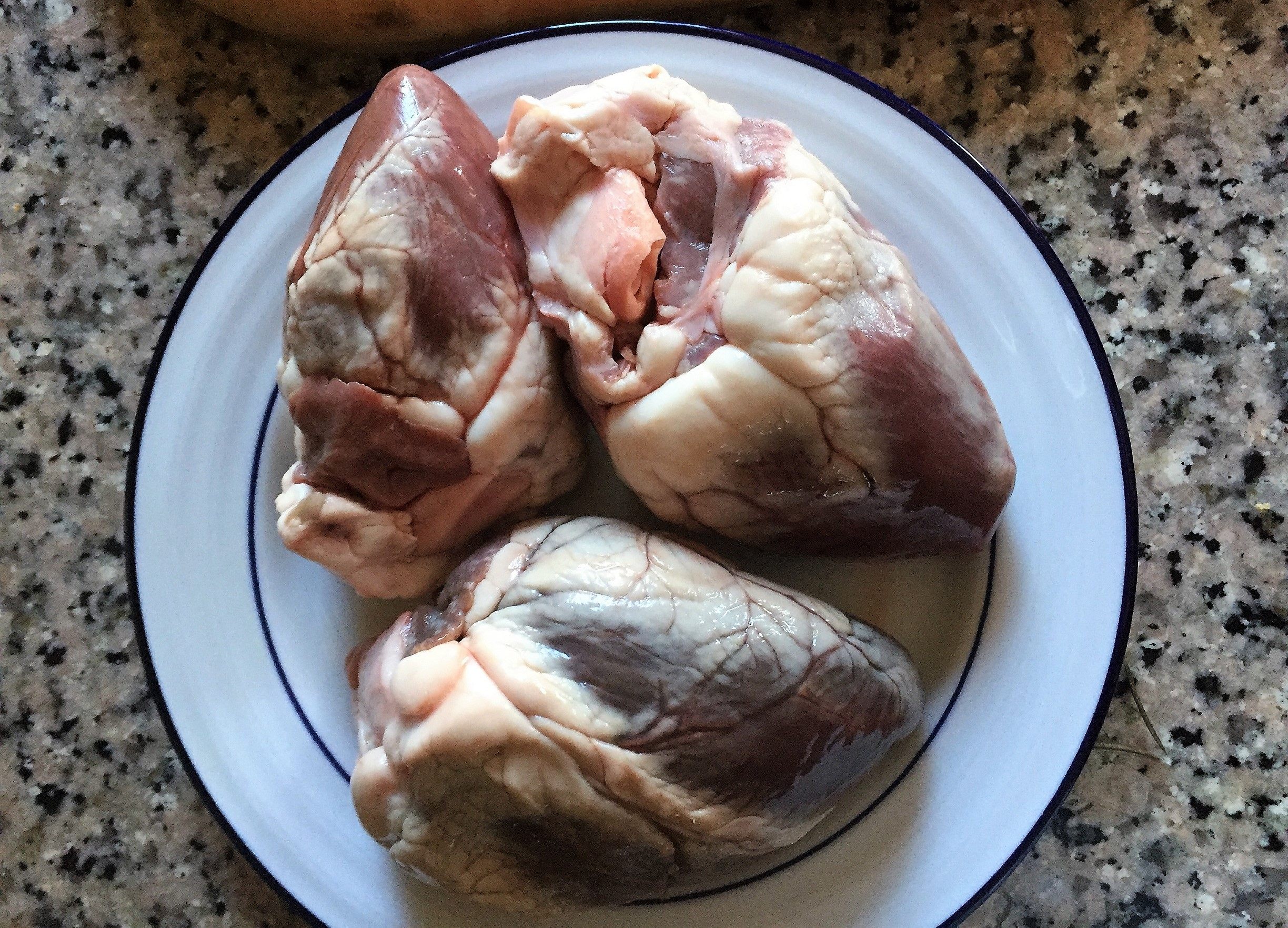
My hunt for hearts began, as I’m sure at least a few other meals have, with a still of Daenerys Targaryen tearing into a raw stallion’s heart. I had been thinking about hearts, and I kept coming back to the idea of eating one, which is no casual meal. Hearts are food for hunters. They convey power, and eating one promises to transform a person by bestowing the qualities of the dead animal. Looking at Daenerys, knowing she was fictional, I still wondered, what would it be like to eat a horse’s heart? Could I do it?
Practically, of course, no, I could not. In the United States, horses aren’t considered food for people, except in extreme situations. But I started to wonder what other hearts might be available to me. I had never considered heart as an appealing food before, but after a few quick minutes of research, I had a list of hearts that people did eat—beef hearts, duck hearts, lamb hearts, pigeon hearts, chicken hearts—and I was sure there must be more.
In most places in the world, I imagine it might be difficult and probably impossible to obtain a heart to eat. I live in New York City. The question flashed into my mind: How many different hearts could I try? How many different hearts could I buy in one day?
It was a challenge to myself and to my city. I’ve lived here for more than seven years, not long by some standards, but longer than I’ve lived almost anywhere else. New York and I have settled into a comfortable relationship, a Sunday kind of love, of familiar tiffs, pleasant routines, and favorite pastimes. But if I were to search for hearts, I would have to open myself up to the city’s possibilities and explore again. I had some ideas about where I might start on this heart hunt, but I didn’t know where it might take me.
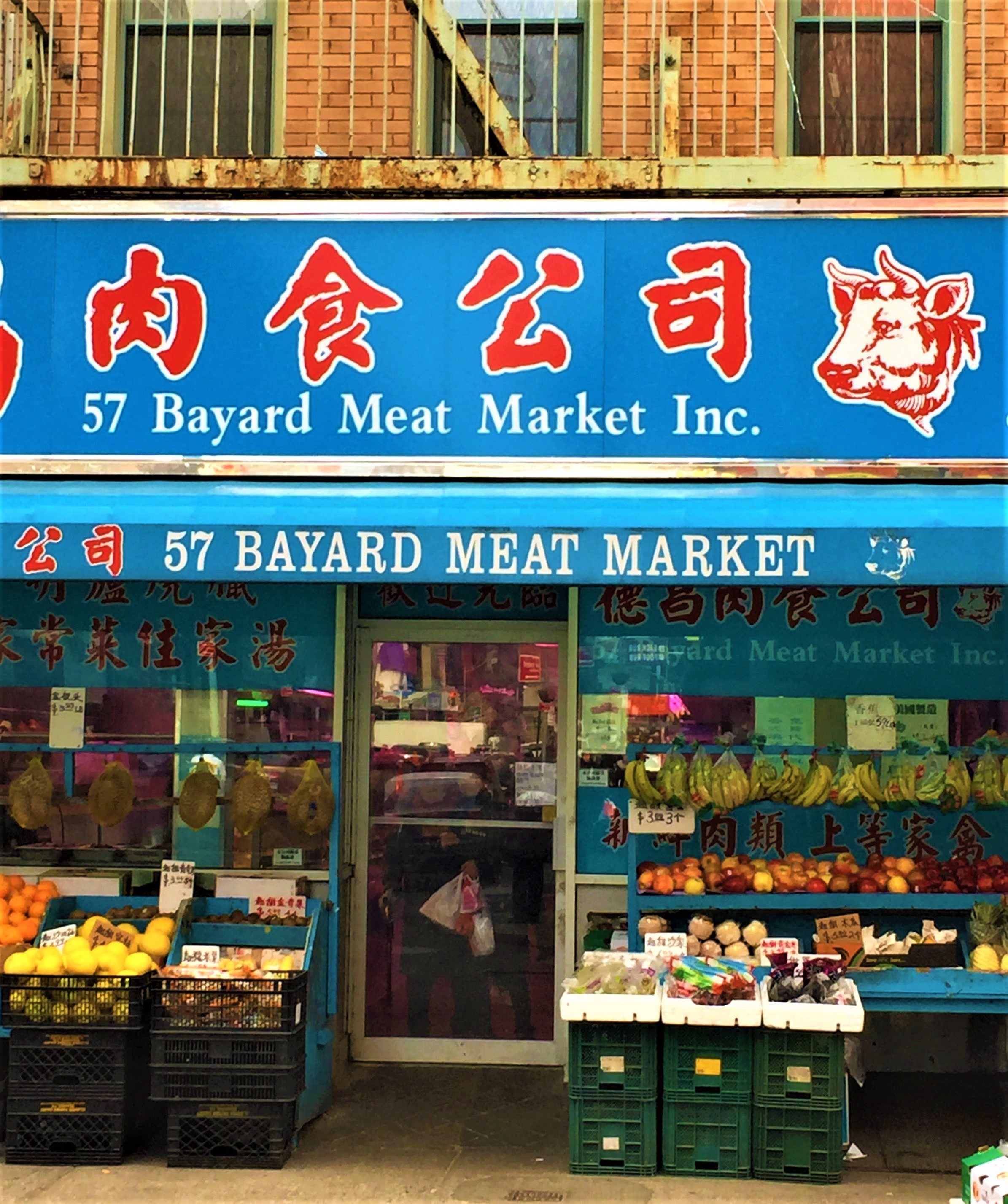
New York is full of speciality shops that somehow make a business of selling obscure items and foodstuffs, and I imagined that to find a heart at all, I would have to visit a hipster butcher or a meat market in a more diverse neighborhood. But I was wrong. The first hearts I found were at the Stop & Shop in Atlantic Center, right by a Target and a Best Buy.
The morning of the heart hunt, I began by looking at the supermarkets on my way to work. I live in a wealthy neighborhood in Brooklyn, where grocers are stocked with ingredients for both adventurous cooks and a wide array of ethnic cuisines; it seemed unlikely but possible that I might find what I was looking for there. I first tried the supermarket around the corner from my apartment, where I found a surprising variety of animal parts—lard, neck bones, shin bones, cow feet, sliced liver, tripe, chicken gizzards, oxtails, chicken feet, pig feet, smoked hocks, pork skin, and a lot of imitation crab meat. No hearts, though.
A few blocks down, at Key Foods, there was still more variety of parts: slab bacon, fat back, smoked turkey tails and necks, pigs’ tails, both white and black pudding, lamb necks, marrow bones, rendered duck fat, ground buffalo meat… and still no hearts.
When I got to Stop & Shop, I wasn’t expecting to find anything: their meat selection was more basic than the other two markets’. But there with the chicken, instead of just gizzards, was a styrofoam package of gizzard mixed with hearts. Hearts! I picked them up and paid $2 for my first hearts of the day.
Perhaps, I thought, this would be easier than I expected. Preparing for the hunt, I had started to worry that New York might let me down. The first couple of butchers I called said that they sometimes had heart meat available, but there could be no guarantee that they would have it on any particular day. “Sometimes our beef has a heart and sometimes it doesn’t,” one butcher told me. I was nervous enough that I would end the day with no hearts at all that I ended up ordering a beef heart in advance. It’s always good to have a heart on layaway, a backup to rely on at the end of the day, when all other options have been exhausted.
So I knew I would end the day with one type of heart, at least, and now I had two.
The next heart, though, was harder to come by. After lunch, I set out from my office and visited the Polish meat markets in the Brooklyn neighborhood where I work. I had always intended to peek inside these places, but at the end of the day my body would always switch to the automatic routine where it rushed home or off to meet friends. When I walked inside the first one, I guessed immediately I would not find what I was looking for. I was met with the toothsome smell of smoked meat and cases of well-crafted sausages, in all shapes and sizes. There was fresh meat, too, but a limited selected. Still, I asked. They did not sell heart. Neither did the shop across the street. I had to go further.
Brooklyn’s been blessed in the past decade with ambitious butcher shops that treat meat like a treasure, promising ethically raised, tasty cuts, for a price. The popular enthusiasm for off-cuts might have crested a few years back, but I still thought I would try my luck at Marlow and Daughters, which buys whole animals from small farms. They didn’t disappoint. They had beef heart, and I kicked myself for my lack of faith in New York City serendipity. They usually had chicken hearts, too, but they had sold their last tub of guts, they said. Only one of the farms that sold them pork sent the heart along, and it wasn’t the one that had delivered this week. After an hour’s search, I was heartless. I headed to Chinatown.

Of New York’s three main Chinatowns, the one in Manhattan is the most tourist-oriented. But it was closest, and I held out hope that I could still find what I was looking for. A few blocks from Canal Street, I walked into the Bayard Street Meat Market, and my own heart grew hopeful. The meat cases were stocked with every random cut of meat I has seen earlier in the day, plus more. There were whole blocks of black blood; there were chickens, including black-skinned Silkie chickens, on ice with their feet and head still attached; in the freezer, there were testicles from more than one kind of animal. But as many times as I walked up and down the shop, I didn’t see a heart. When I asked, they had only bad news: no hearts were available that day.
The next shop I went to was on Catherine Street, on the other side of the Bowery, past the spot where I had waited with my college boyfriend for a Chinatown bus to go… I couldn’t remember where now, no matter how much I tried. This small area of Manhattan, squished behind the Police Department and between the Manhattan and Brooklyn Bridges, feels a little cut off from the rest of the city, and I could remember coming here only once before, to find a book that only the library branch located here had in. When I found the meat shop, I was optimistic. While the one I had just visited had signs in Chinese and English, this sign’s shops were entirely in Chinese.
When I asked for a heart, the man behind the counter said, “Pork heart?” and nodded yes. He showed me a tray full of little red coins of meat, and I was surprised—they were so small! Was that what pork heart looked like? When he asked me how many I wanted, I hesitated. “Five?”
“Five pounds or five pieces?” he asked.
“Five pieces?” I was unsure, and he looked surprised. He went into the back, came back carrying a bucket, and it was only then that I noticed at the back of the tray three large hearts—hearts, clearly hearts—and realized I had made a mistake. I only wanted one, I told him, and he laughed, because five hearts! That was a lot of heart to order. He weighed one for me, and handed it over. It cost $3.
Carrying that heart, I felt for the first time the weird weight of the mission I had started on. A pig’s heart looks almost exactly like a human heart, and I started wondering whether I had ever seen one before. I knew the heart when I saw it; I knew exactly what it was supposed to look like. But where would I have encountered a heart? In photos, only. Was this the first heart I had ever seen in real life? Later, I realized that I must have seen a human heart preserved in a jar, most likely at the Mütter Museum. Still, this was the first time I had held a mammal’s heart, a heart like my own, in my hand.
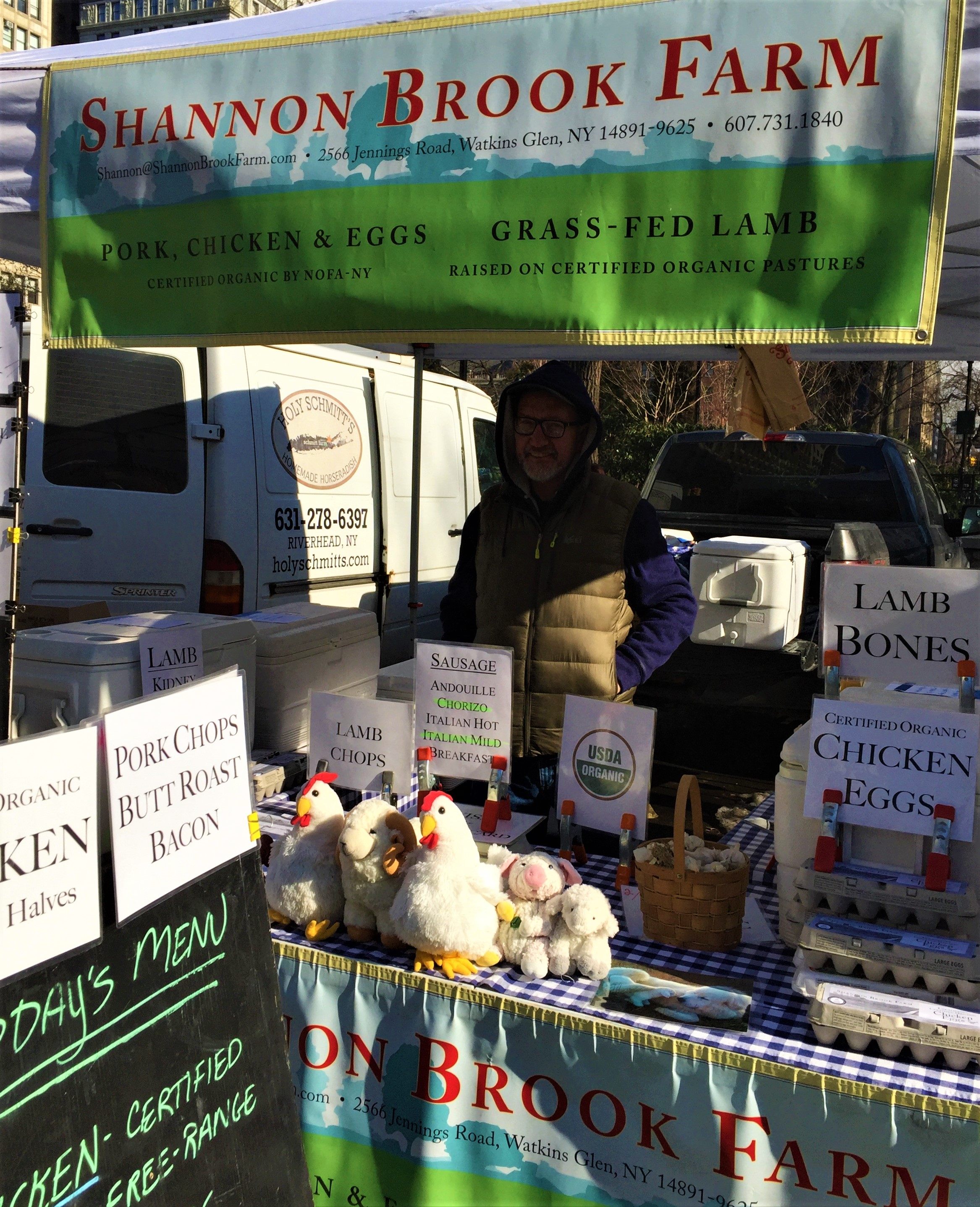
From there, the hearts came more easily. I went to Greenmarket at Union Square, where I bought the last package of lambs’ hearts (it came with two) from Shannon Brook Farm. At the duck stand, I found duck hearts, only they were freeze-dried as dog treats, not meant for people. Another stall sometimes sold goat heart, but it was the end of the season, so they were out. They could offer me a veal heart, though, which I balked at when I saw it was 1.86 pounds. (When I had ordered the beef heart, the butcher had told me it would be 2 to 3 pounds, but if the veal heart was so heavy, how much larger might the beef heart be?)
It was around this time, chicken, pork, and lamb hearts already acquired, that I started worrying that I wouldn’t get enough hearts. Had I bought enough chicken hearts in the morning? Would I be able to find more than four kinds? Suddenly four hearts didn’t seem like enough, and I started hoping for a goat heart. I had just enough time before I needed to be back at the office to visit the meat-packing district, where at a meat market on 9th Avenue, I bought a whole package of chicken hearts only. Dozens and dozens of them. Too many chicken hearts.
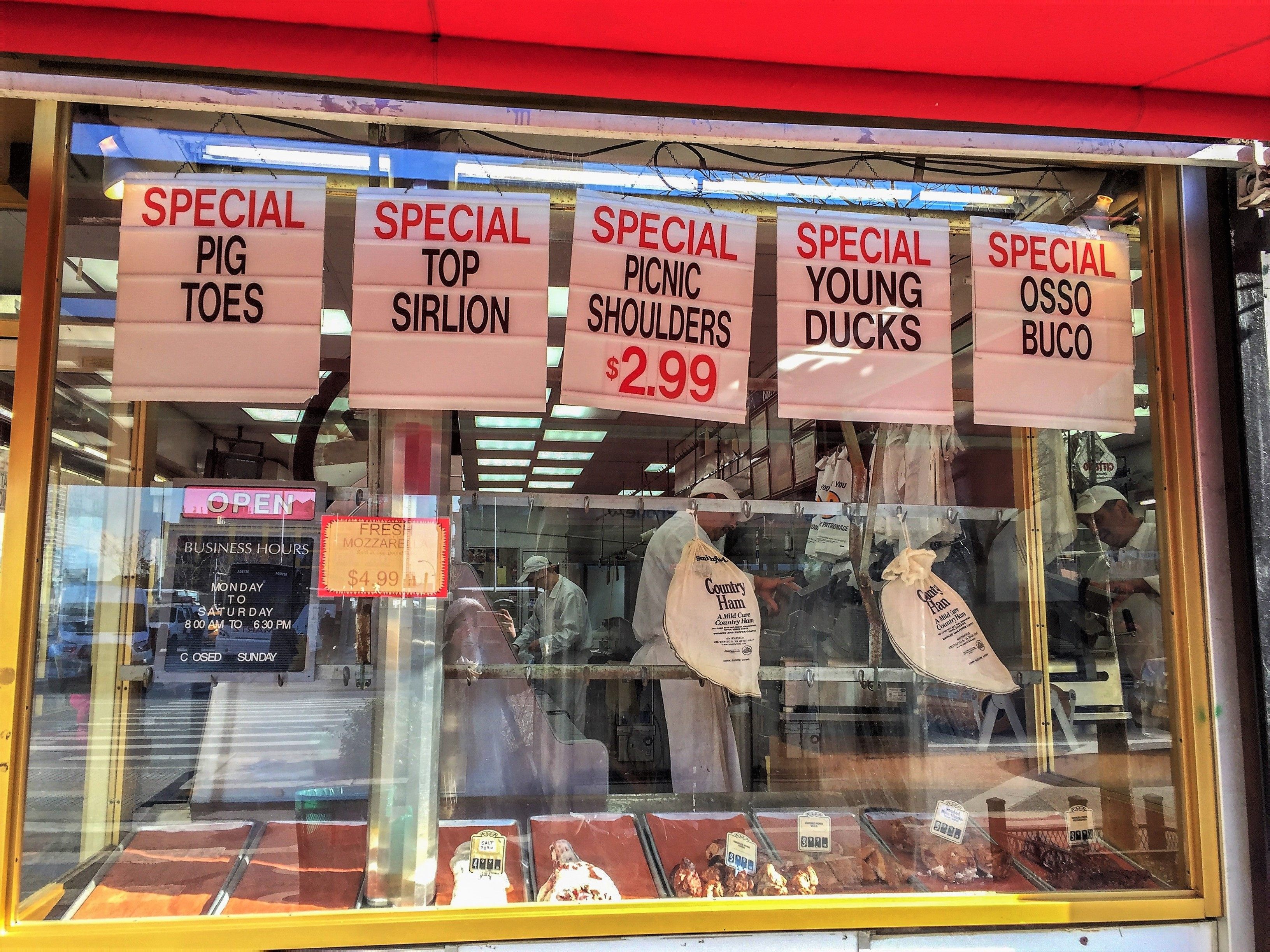
My last stop was Esposito Meat Market, which has been in business since 1932 and seemed like the sort of business that’s hard to find in New York now. While I was waiting to be served, a customer walked in, and the butcher greeted her by name—“Hi, Audrey.” A few minutes later, another regular came, and told the man behind the counter, “Give me the breast this week, Mitch,” as she pointed to the chicken. When it was my turn, I found that I could have come straight here, if all I wanted was heart. What kind of heart did I want? They had pork heart, beef, sheep…
“Goat?” I asked. They sold me a goat heart, a small, frozen handful of flesh. I put it into the bag with my other hearts, which had started to feel a little bit creepy. As I rode the subway, I wondered what other people would think if they knew that I was carrying around a collection of animal hearts. The pork heart, the sheep heart, and the goat heart all looked like different-sized versions of the exact same organ, small, medium, and large. What kind of creep carried around four hearts? Even then, before I was faced with the problem of eating them, I started feeling queasy about the meat I had chosen. Most meat is easy enough to distance from living animals, but a heart is proof of death: in Snow White, the Queen asks the hunter to bring back the maiden’s heart. Carrying these hearts, I had to face more directly the fact that these animals had died, and I would eat part of them.
Later that evening, when I picked up the beef heart I had ordered from the Meat Hook, another small, hip butcher shop, it only added to the weight I was carrying: it was a whopping three-and-a-half pounds.
I had fulfilled the task I had set for myself. New York had lived up to my expectations, even dazzled and charmed me. I remembered again why I love this city, and I had acquired many hearts, almost certainly too many hearts. What was I going to do with them all?
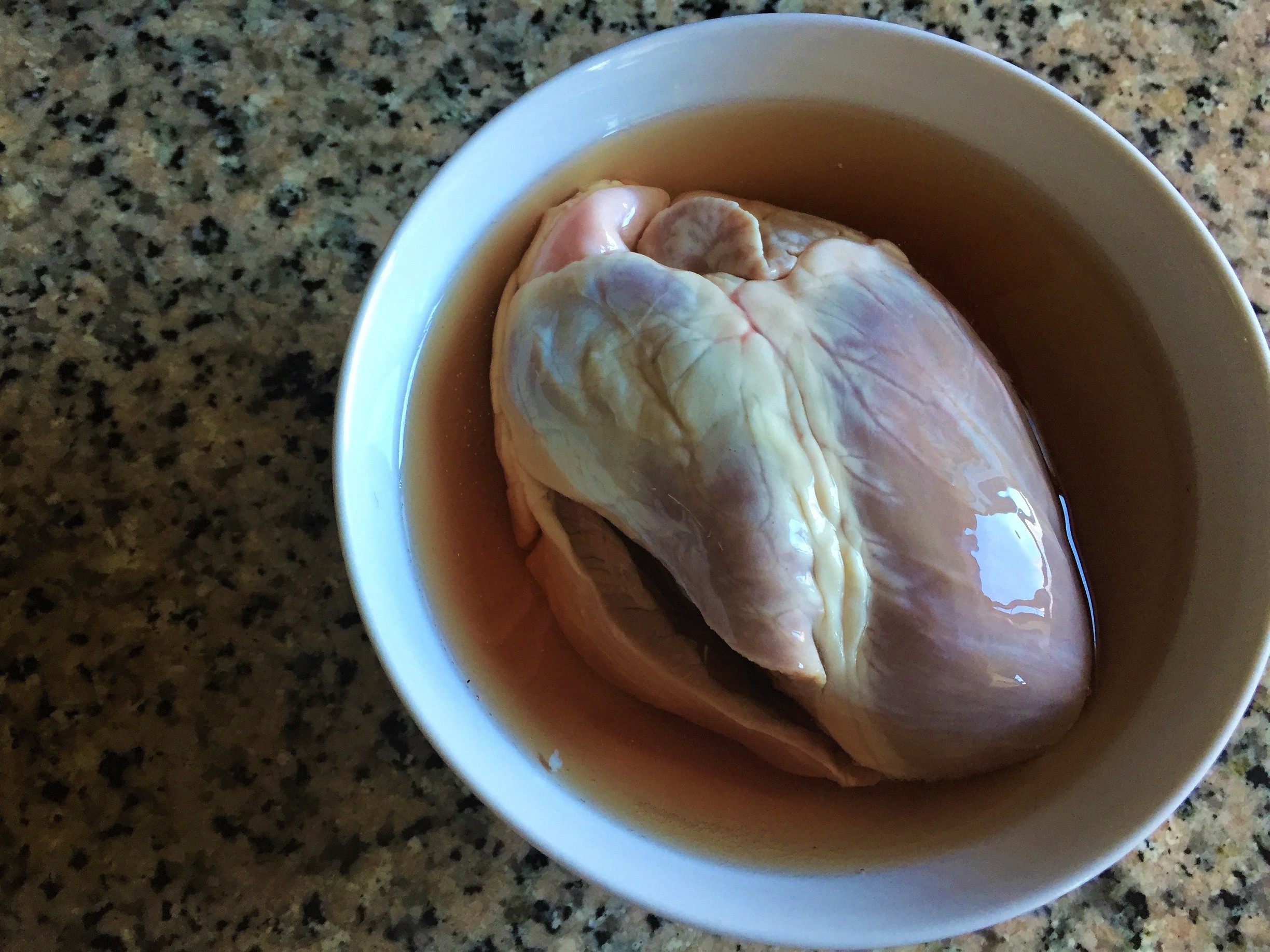
Eating heart meat is uncanny because, I think, the experience is both similar and distinct to the experience of eating more common cuts of meat. People kept pointing out that, after all, it’s just a muscle, and though I started out from that place, I came to feel it wasn’t accurate. I started pulling out knowledge lodged in my brain from high school biology and talking about the distinction between skeletal muscle, which we eat most often, the smooth muscle of the esophagus and stomach, and cardiac muscle, which isn’t quite like either of the others. Like the smooth muscles of the body, the heart works involuntarily, without direction, but it looks a bit like skeletal muscle, strong and striated. But heart cells are organized differently, which means that the muscle’s texture—the meat’s texture—is different. There was a gap between eating other meat and eating heart meat, and it required a bit of bravery to cross. (Is that what they mean when they say “take heart”?)
I went looking for heart recipes, and despite the fad of nose-to-tail butchering, the internet wasn’t much help, although I did learn that a small number of people have a passion for fresh venison heart, grilled or corned. Still, most of the recipes I found came from paleo diet blogs and basically advocated for a quick sear. The cookbooks I had at home were of no help at all. For this, I needed experts.
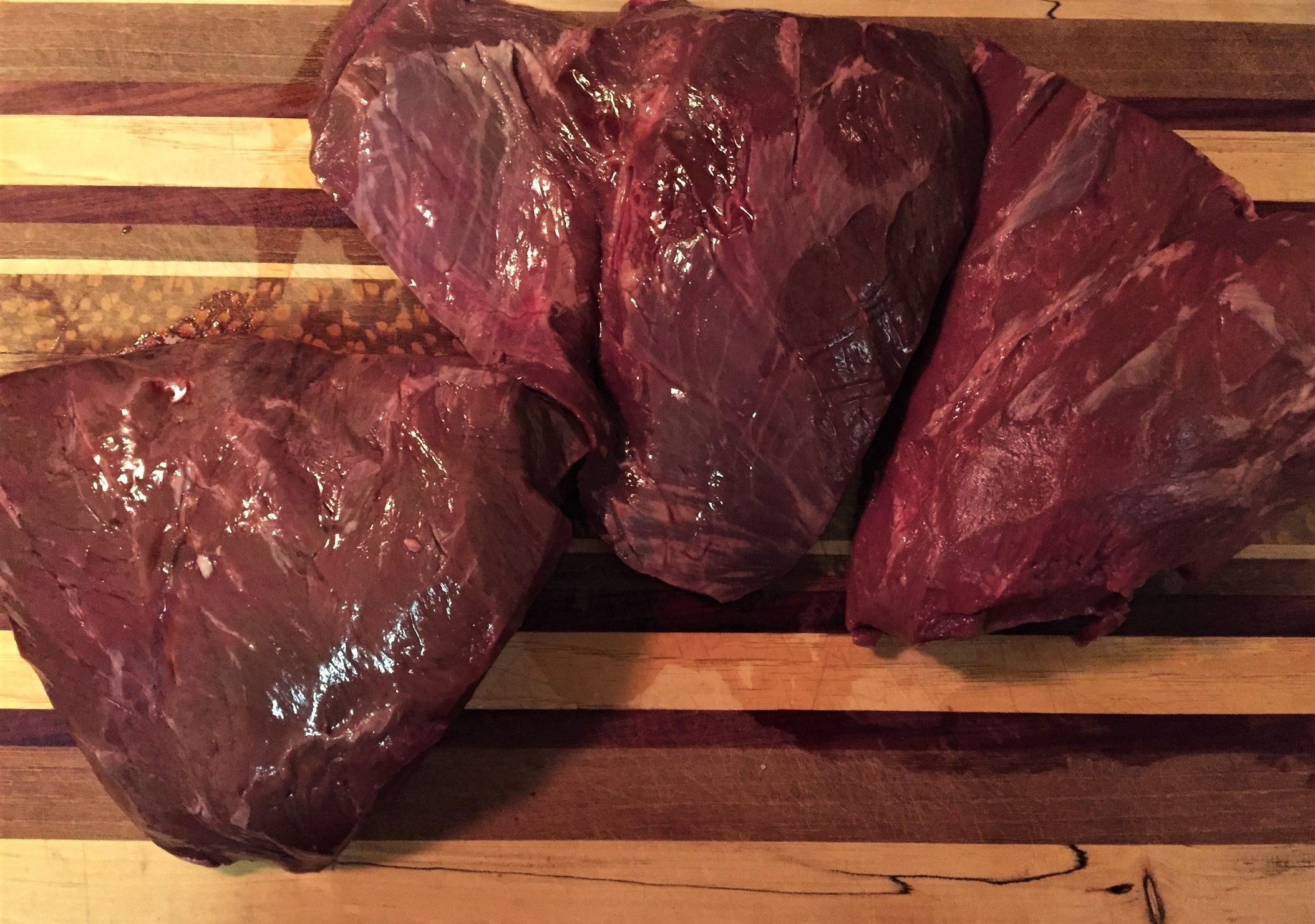
“With all animal hearts you have two choices—cook it fast and rare or long and slow,” says Jennifer McLagan, a Toronto-based chef whose cookbook Odd Bits covers all manner of offal. “Anywhere in the middle is awful.” This, I learned quickly, was the main piece of advice for preparing heart. One of the most popular preparations for beef heart, for instance, is Peruvian anticuchos, where the meat is marinated with peppers and lime, then skewered and quickly grilled. The other options is to braise the meat, either whole or sliced: heart is stewed with various vegetables and spices everywhere from Portugal to the Philippines.
Anissa Helou, a London-based chef and author of Offal, prefers the fast-and-hot preparations.
“The treatment would change according to the heart,” she says. “If it is from a medium to a big animal, sliced thinly and grilled very quickly on a griddle would be perfect, and if they are from a small animal such as chickens or ducks, grilled quickly on skewers would be great. You can also stew them but they won’t be so good.”
McLagan also had a recommendation for one preparation in particular. “Heart tartare is amazing,” she said.
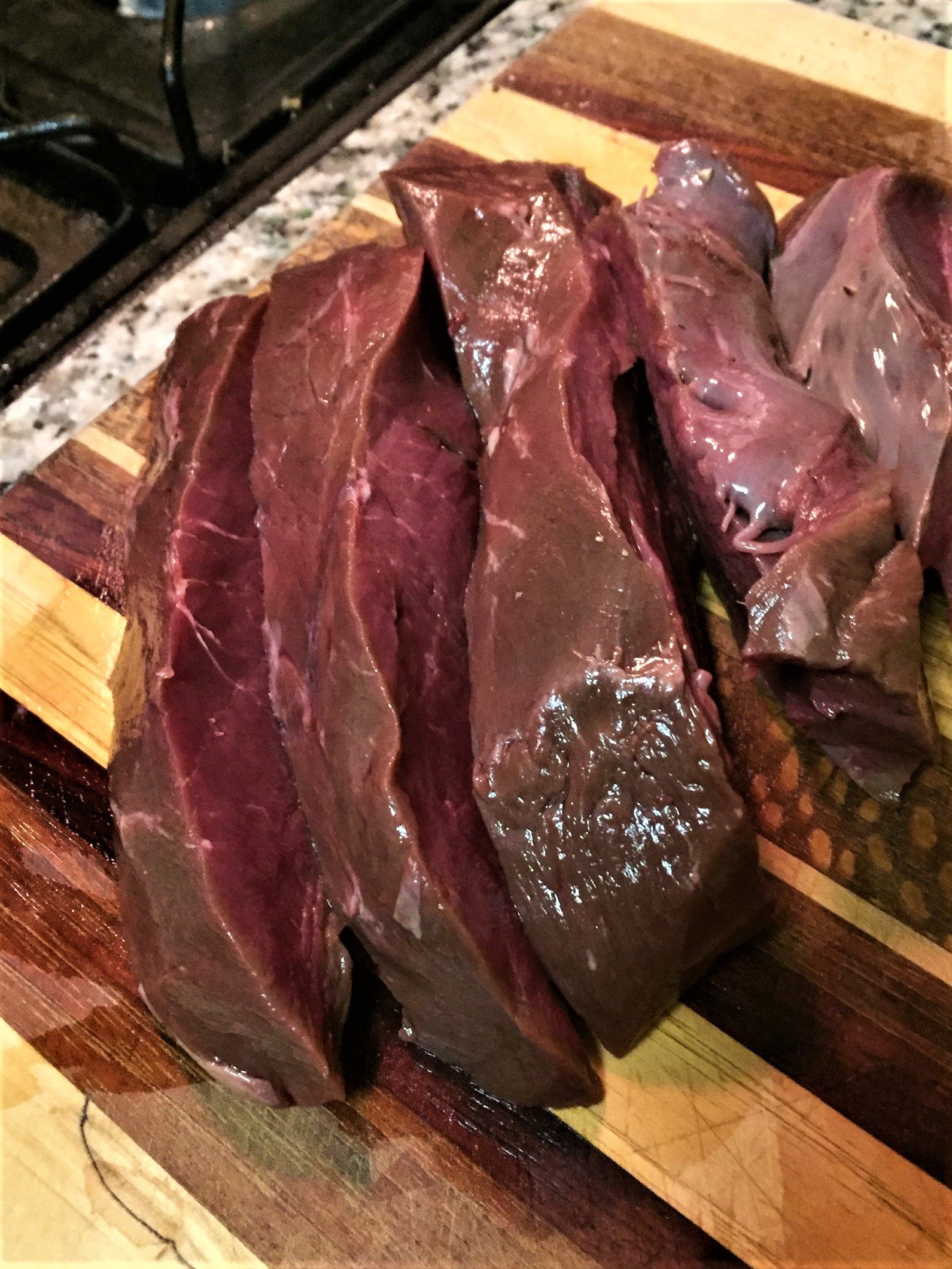
I tried the beef heart first. When I first unwrapped it, perhaps because it was so fresh, it smelled stronger than any other piece of meat I’d ever had—not bad, but a sharp tang of metal and blood. I seared a piece of it like I would a steak. After it rested, I sliced it thinly and took a bite. It did taste like steak, but also not—the texture was mushier, more like baby food, and the taste stronger, more like meat boiled down to its umami essence. It wasn’t unfamiliar, though I couldn’t quite place where I had tasted it before. Later, I would read that commercial ground beef could contain a certain percentage of beef heart meat, and I placed the taste: the thin patties of fast-food burgers.
The chicken hearts were next, marinated with lemon juice and garlic and skewered on rosemary, a recommendation I’d picked up at Marlow and Daughters. They looked like little grey nuggets of meat, and when I tasted the first one, I was surprised how much I liked it. While the beef heart had tasted like bizarro steak, the chicken didn’t taste like anything else I’d tried. It didn’t taste like chicken; it was meatier and smoother. I had a few more.
In McLagan’s book, she offers suggested substitutions for each of her recipes, and it seemed like many of the hearts were interchangeable. The “Peruvian heart kabobs” could be made with beef heart, lamb heart, or poultry hearts; the beef heart in the heart salad could be subbed for lamb heart or pork heart. When I asked her how I should choose what to do with my many hearts, she told me to consider that “it really is just like any other piece of meat.” The beef would taste like beef, the pork like pork, the lamb like lamb. Treat it accordingly.

I wanted to braise at least one of the hearts, so I replicated a pork stew I had made when I was trying out a medieval diet. I sliced and grilled pieces of goat heart plain. I marinated more beef heart to make the Peruvian anticuchos; I saved some of the beef heart—there was so much of it!—and the lamb heart for the tartare.
None of it was impossible to eat. Each time I started working with a heart, I noticed that my fear of it slipped away when I sliced it into pieces and it looked like more familiar meat. Each time I went to eat it, though, the fear returned a little bit. It did taste like any other piece of meat, except that it didn’t. Something was always a little different. The texture was both softer and chewier; the aftertaste more metallic. I enjoyed the goat heart, which I thought tasted milder than other goat I’d had, and the beef anticuchos were different enough from any other beef kabobs I’d had that they tasted like a new treat. The pork heart from the stew did not taste bad; it had a mild porkiness to it and a stronger, liver-like flavor.
I tried the tartares last. The beef was darker than the pinkish lamb, and I mixed them both with the salty and sharp condiments of tartare, minced shallots and capers, a dash of dijon mustard, and umami worchestire sauce. I put a bit on a cracker and tried it. The meat melted away, soft and pleasant and rich. Of all the ways I had prepared the hearts, this was the first one where I thought: I could keep eating this. In that moment, it felt like the hunt had been worth it. I had learned to love something new.
Where to buy heart in New York City
Stop & Shop 625 Atlantic Ave., Brooklyn,
Marlow & Daughters 95 Broadway, Brooklyn, NY
Catherine Meat Market 21 Catherine St., New York, NY
Shannon Brook Farm Union Square Greenmarket
Big Apple Meat Market 529 9th Ave., New York, NY
Esposito Meat Market 500 9th Ave., New York, NY
The Meat Hook 397 Graham Ave, Brooklyn, NY
Gastro Obscura covers the world’s most wondrous food and drink.
Sign up for our email, delivered twice a week.







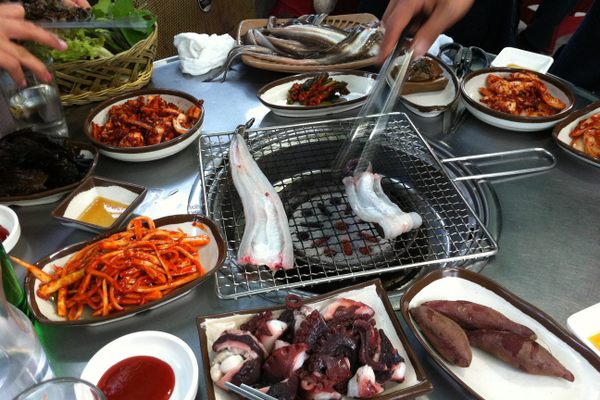
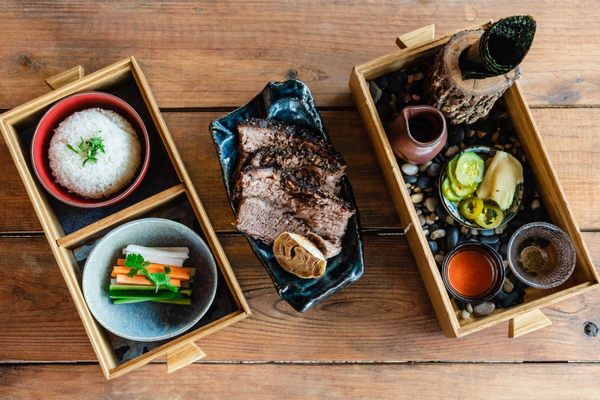

















Follow us on Twitter to get the latest on the world's hidden wonders.
Like us on Facebook to get the latest on the world's hidden wonders.
Follow us on Twitter Like us on Facebook